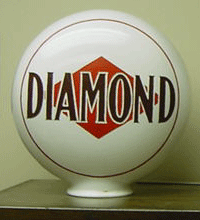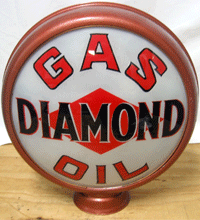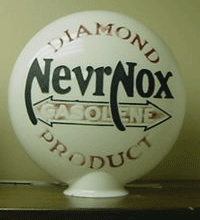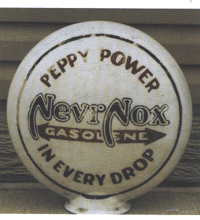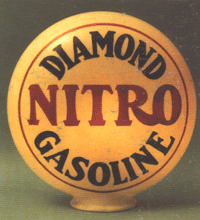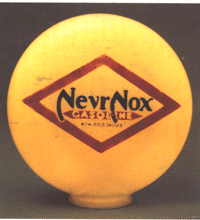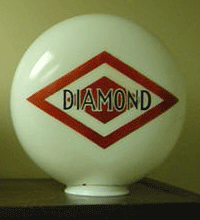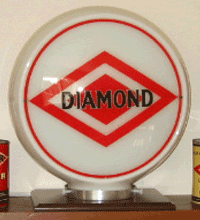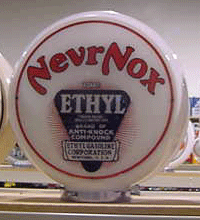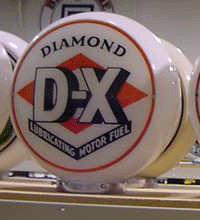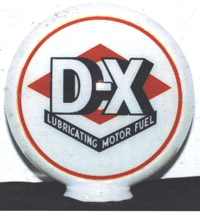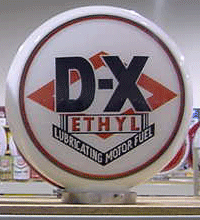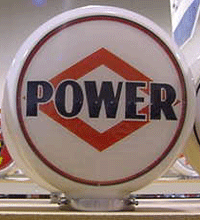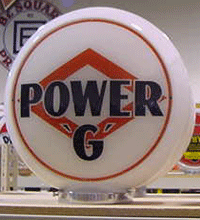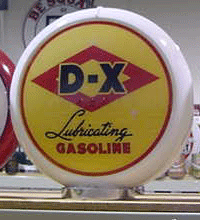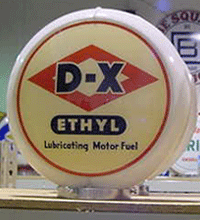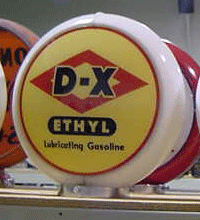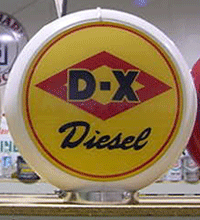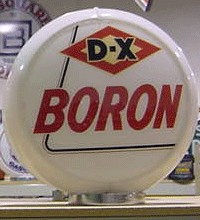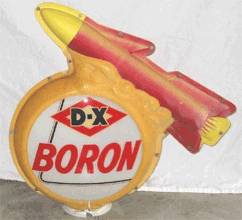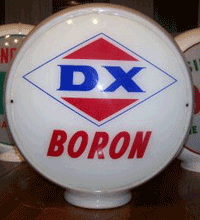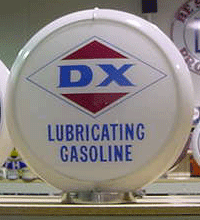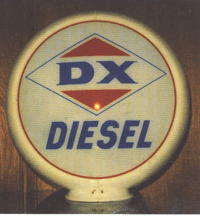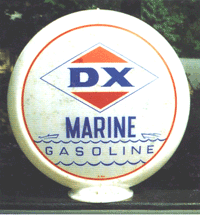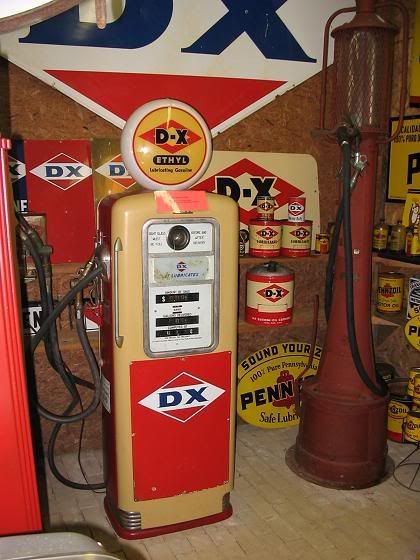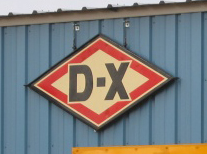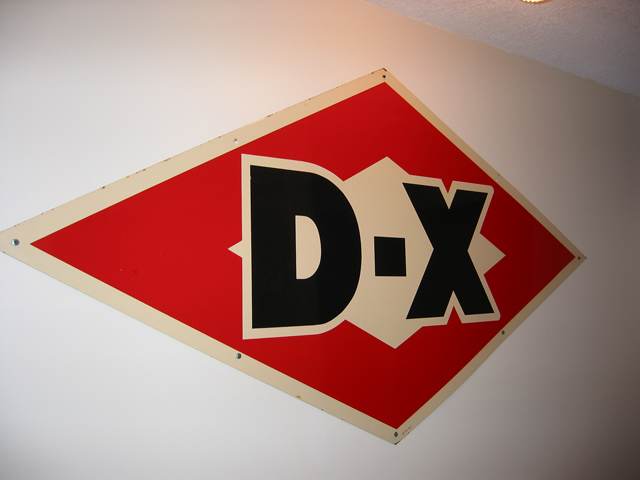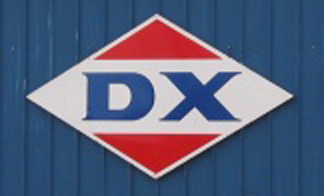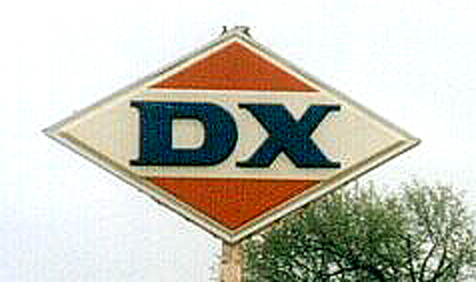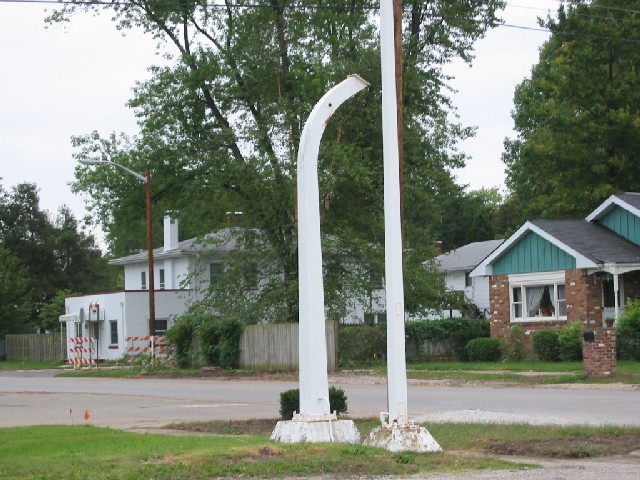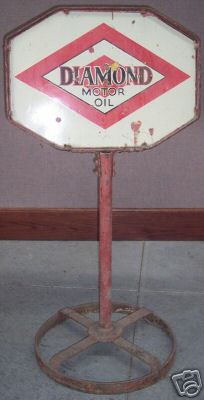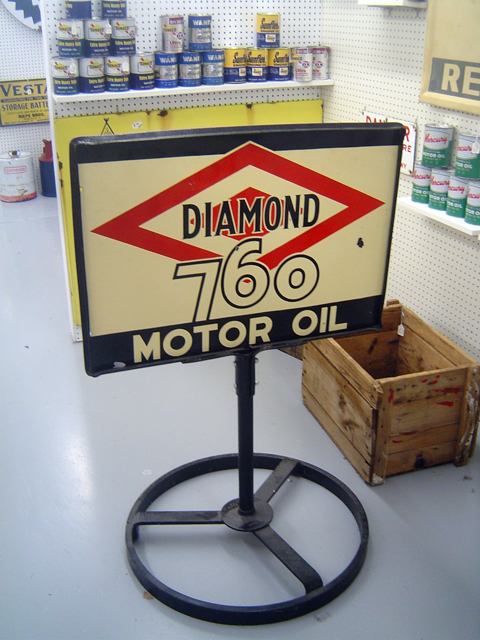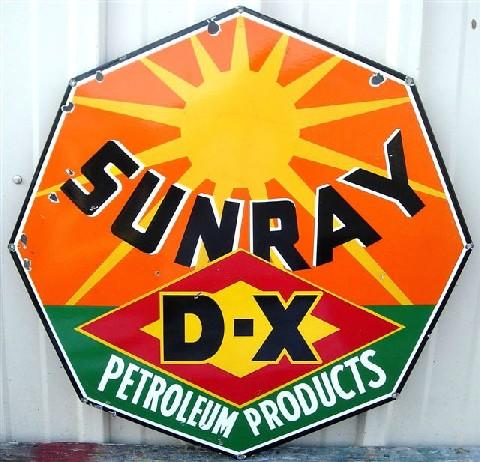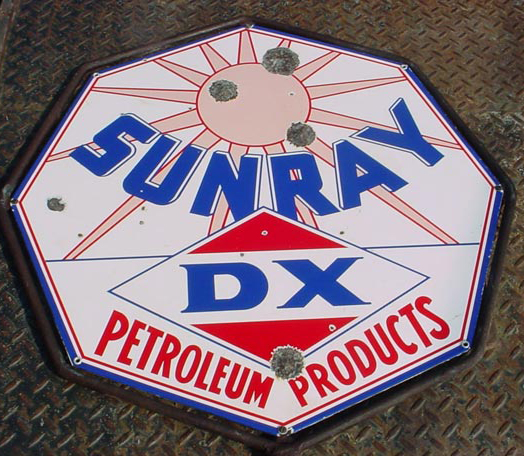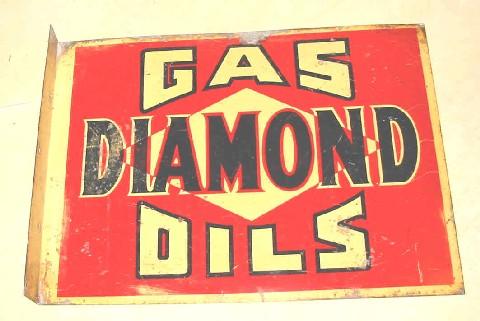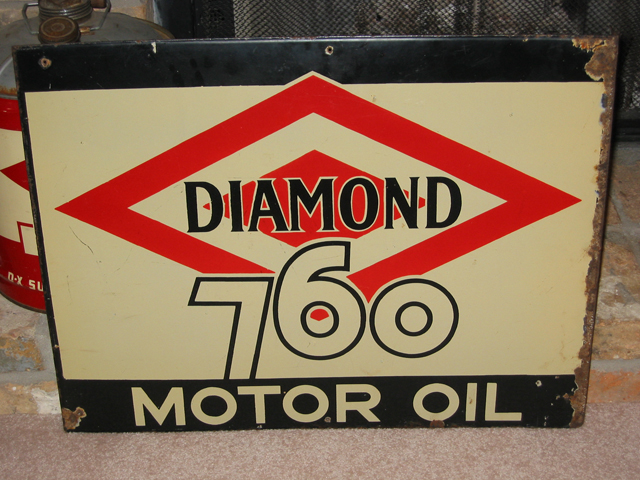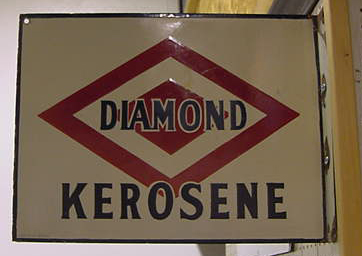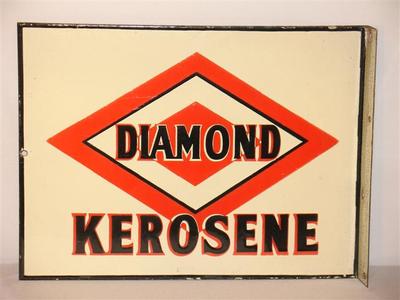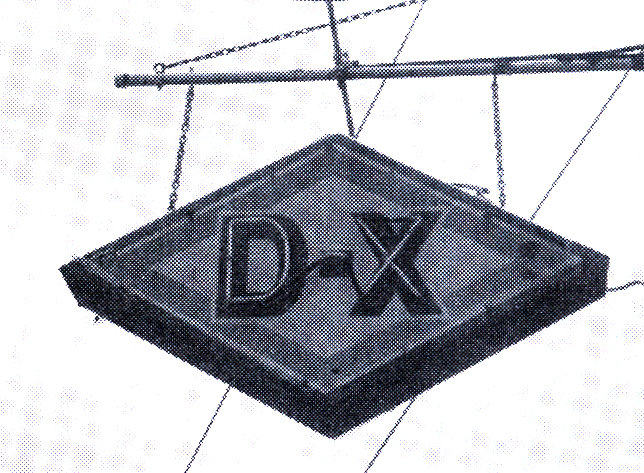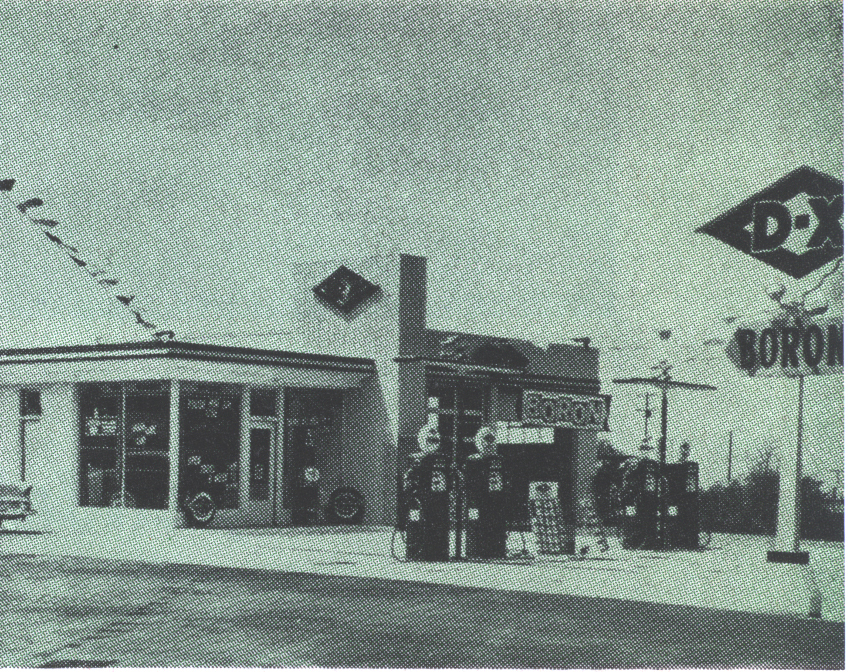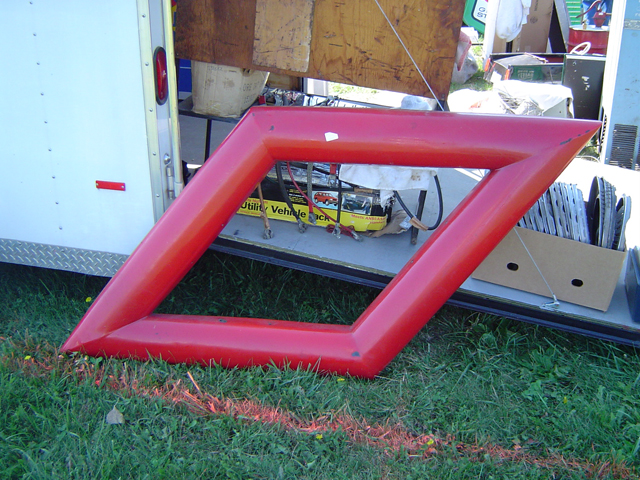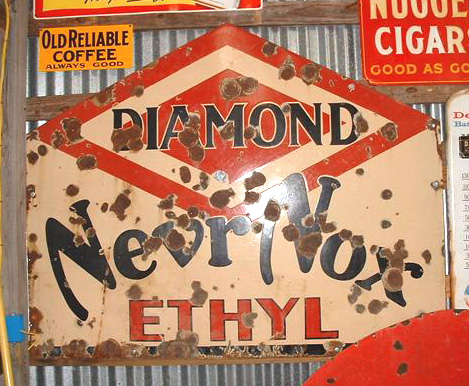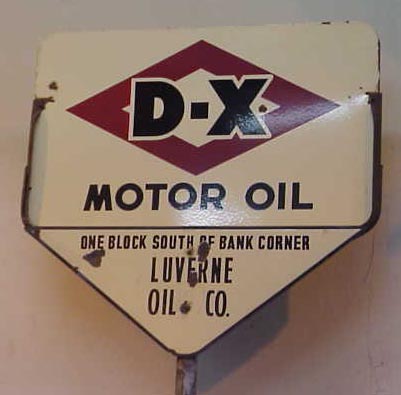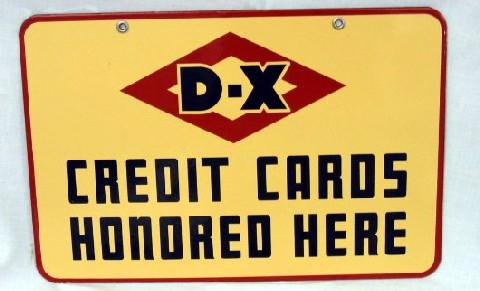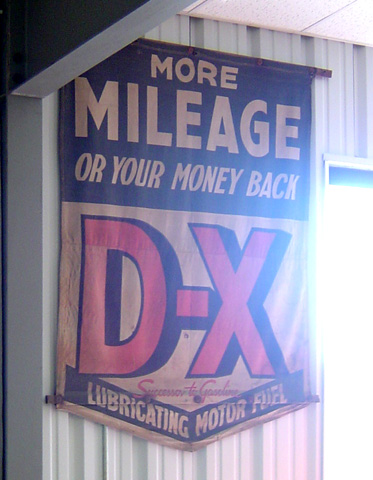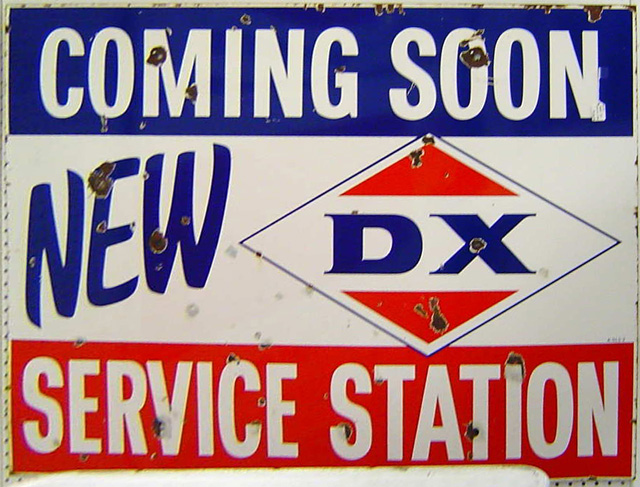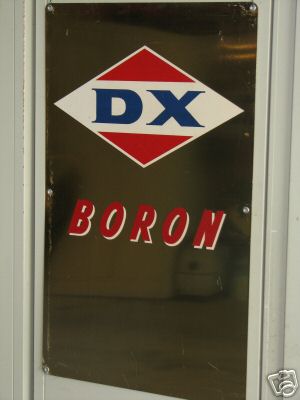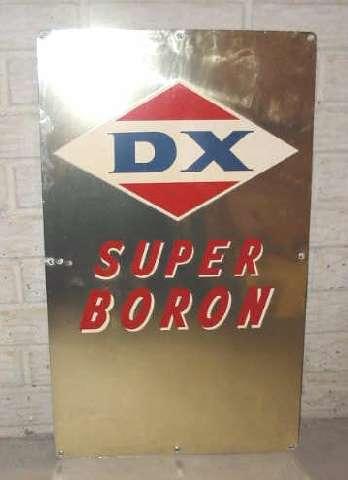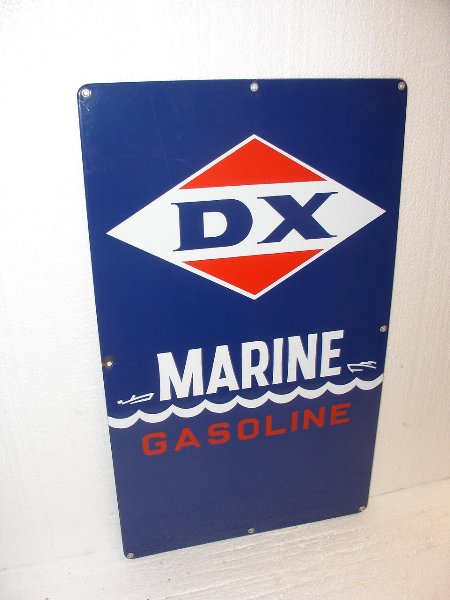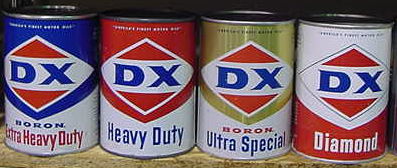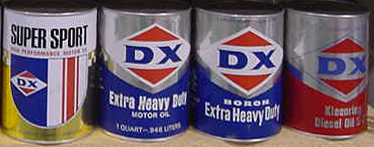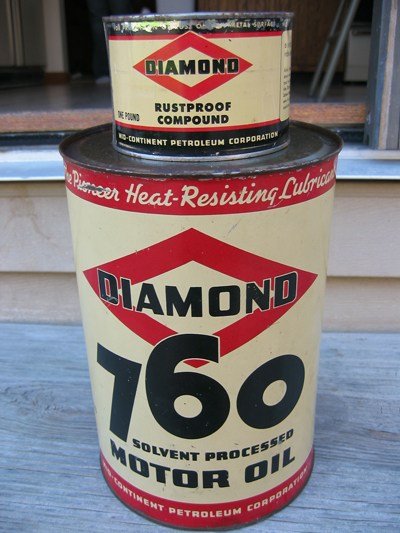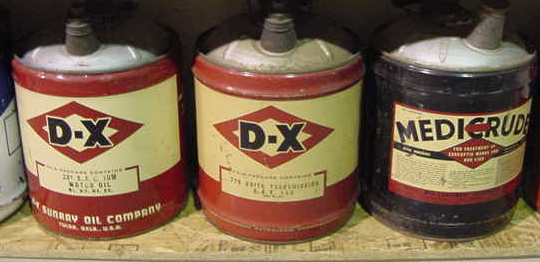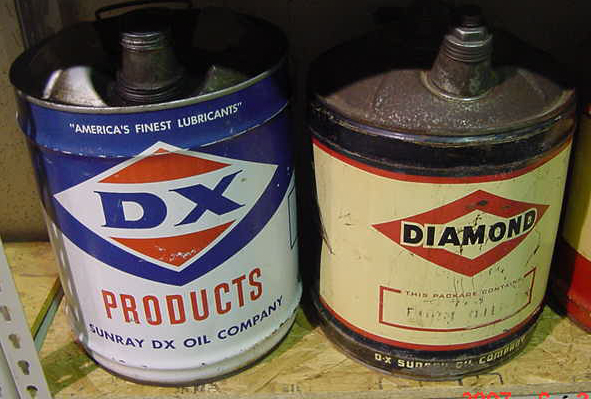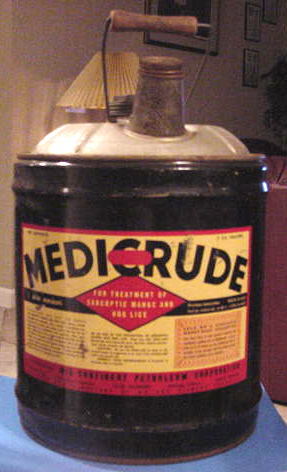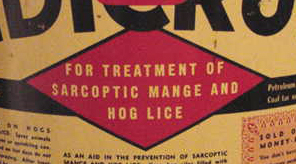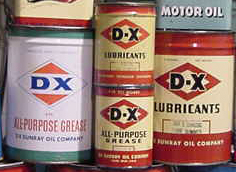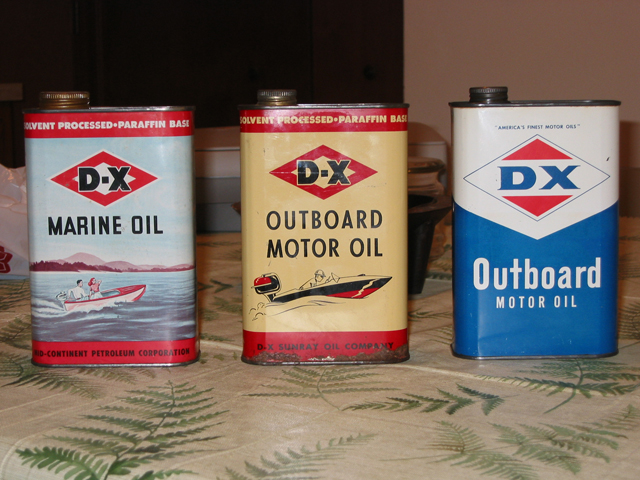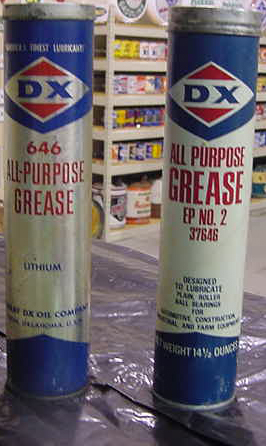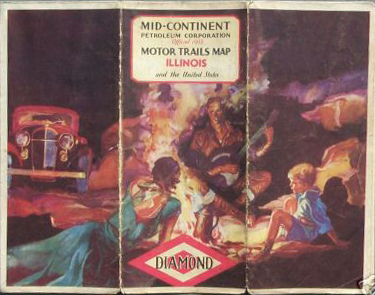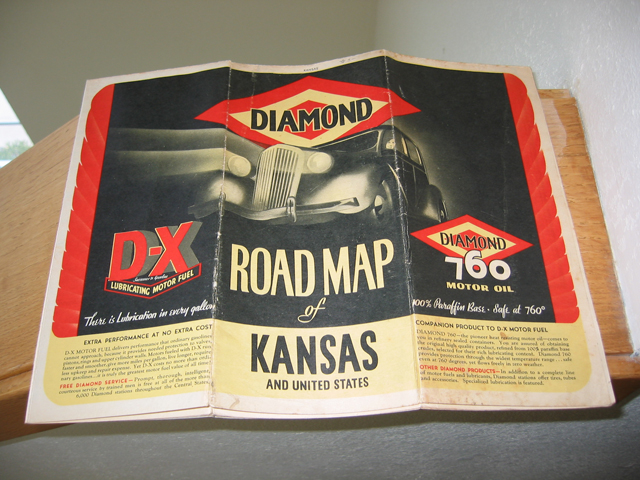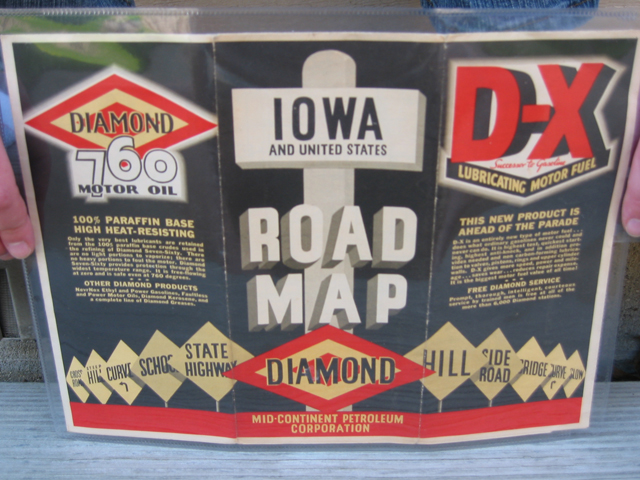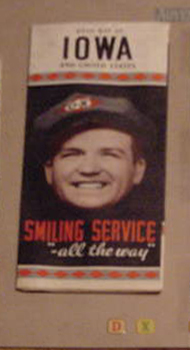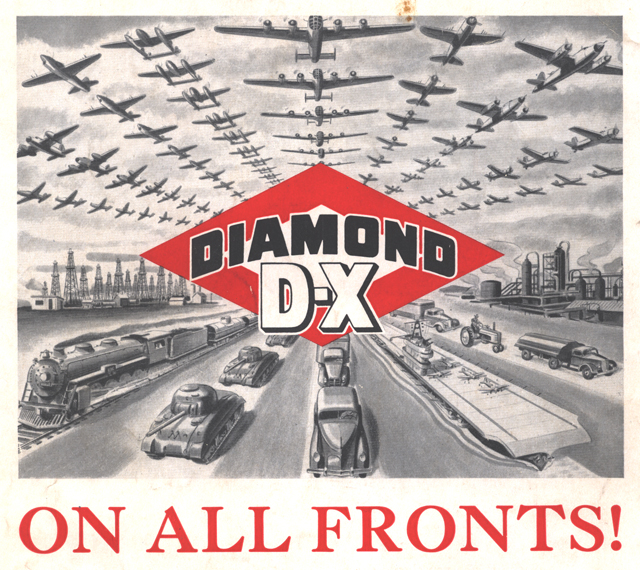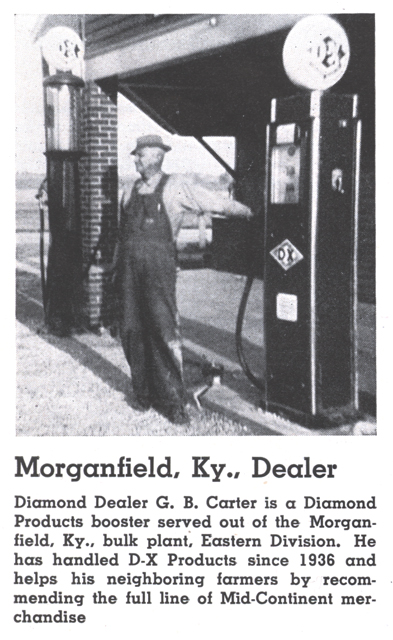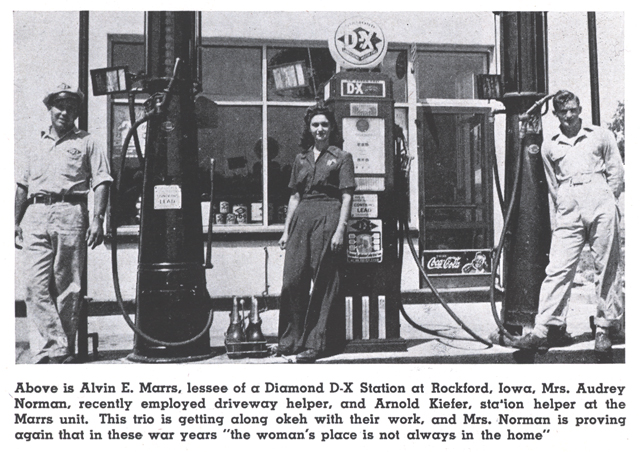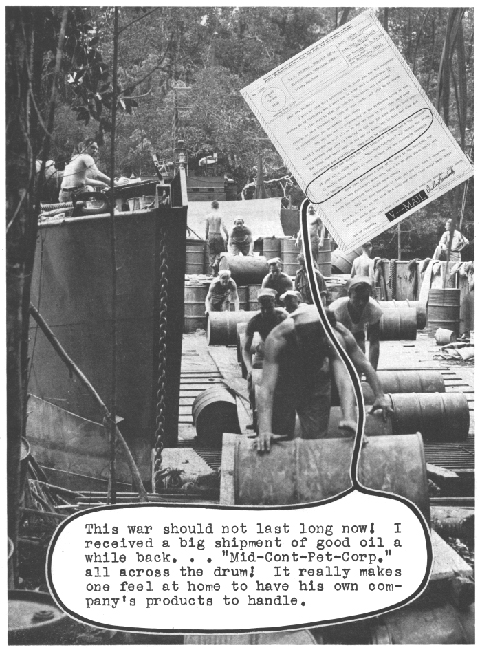COTM -- Mid-Continent Petroleum Corp. / D-X -- June 2007 - Sat Jun 02 2007 02:48 AM

Hello everyone!
Welcome to this month’s installment of Company Of The Month here on oldgas.com!
This month’s feature will cover the Mid-Continent Petroleum Corp. (D-X Sunray, Sunray D-X, Sunray Mid-Continent). I’ll start off with a brief history, a timeline, and then we’ll start posting pictures of signs, globes, cans, pumps, maps, and everything else that we can find. I hope to get a lot of participation, as Mid-Continent / D-X is fairly popular, and one of my favorite brands.
I would like to thank Wayne Henderson, Bob Drake, and Scott Shipers for helping me put this together so far, and I’m sure I’ll have many more of you to thank by the end of the month.
So, let’s get started!
Company History:
The history of Mid-Continent is somewhat fuzzy, due to the extreme complexity of the businesses involved in its formation and the limited availability of records from this period.
It all started with Josh Cosden of Tulsa, Oklahoma in the mid teens. Mr. Cosden, a prominent businessman and local celebrity in Tulsa, is briefly described in this article from the Harvard Business School:
“Known as the "prince of petroleum," Cosden is credited with establishing Oklahoma as a major oil producing state. Starting with a small parcel of land, he built a $35 million oil business in ten short years. Through his oil discoveries and exploration, he almost single-handedly quadrupled the population of Tulsa at the turn of the century.”
Mr. Cosden established Cosden Oil & Gas Co., building its new headquarters building (called the Mid-Continent building) in 1916. Mid-Continent Petroleum Corporation was organized as Cosden & Company, a Delaware corporation, in 1917. Various Cosden holdings were re-incorporated as Mid-Continent Petroleum during a forceful restructuring that took place in 1925. It was at this time that the Mid-Continent building in Tulsa officially became the headquarters of the Mid-Continent Petroleum Corporation.
The Washington Post stated in 1927:
”The company is a holding corporation, but through its subsidiaries produces and refines crude oil and distributes its products at wholesale. Oil properties owned are located in Oklahoma, Texas and Kansas.”
As of 1932, they were operating the following subsidiaries:
Cosden Pipe Line Co.
Kay & Kiowa Oil Co.
Cosden Oil & Gas Co.
Mid-Continent Petroleum Company of Kentucky
Cosden Sales Corporation
Cosden Building Company
Also as of 1932, Mid-Continent was operating a 40,000 bpd refinery at West Tulsa, OK, nine natural gasoline plants, production properties in Oklahoma, Kansas, Texas and Arkansas, 1300 miles of pipelines, and marketing from Texas to Canada throughout the Mid-Continent area.

[This message has been edited by thermactor (edited 06-02-2007).]
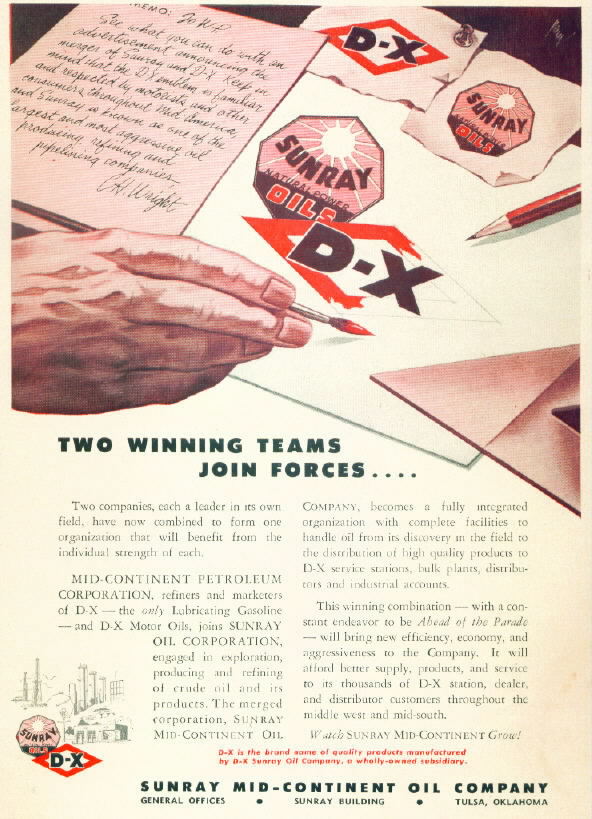
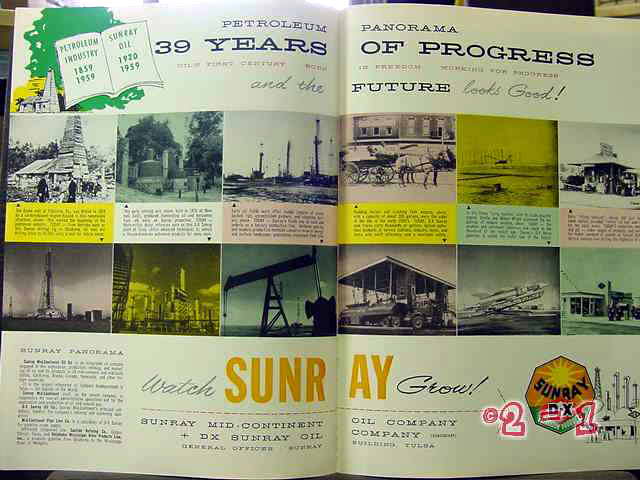

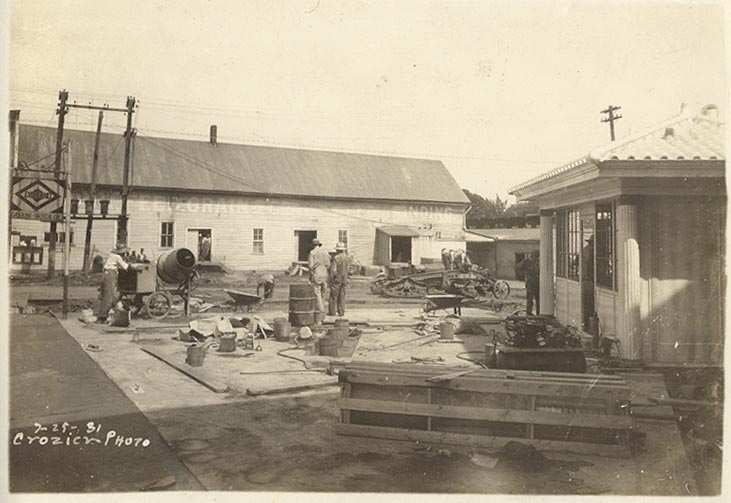
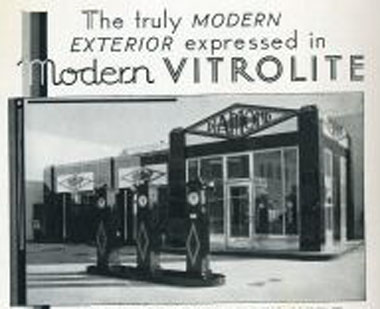
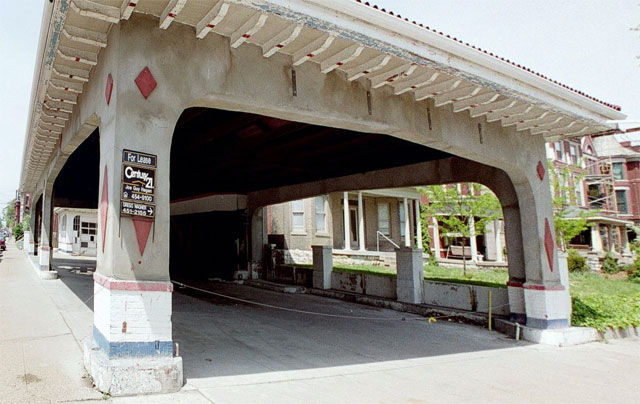
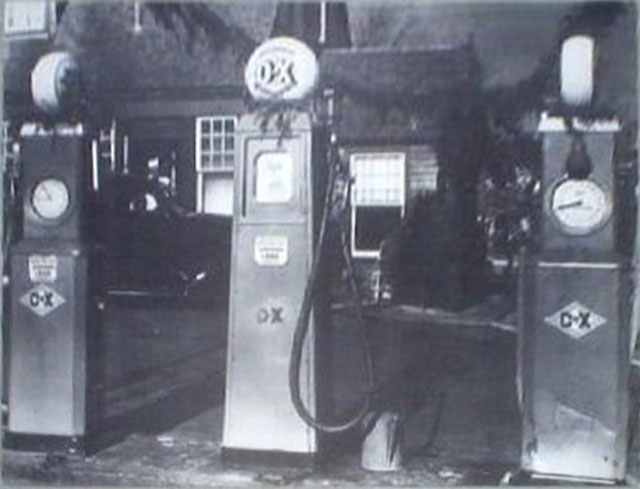
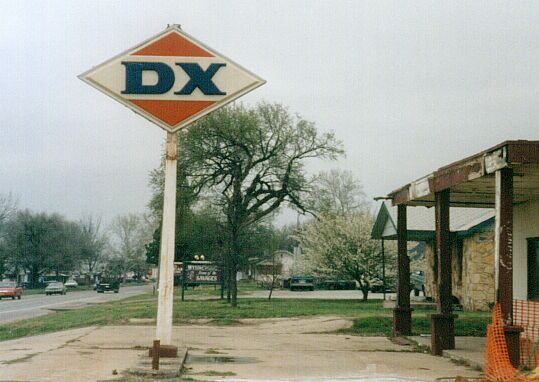


 .
.

